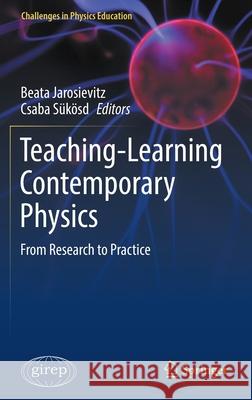Teaching-Learning Contemporary Physics: From Research to Practice » książka
topmenu
Teaching-Learning Contemporary Physics: From Research to Practice
ISBN-13: 9783030787196 / Angielski / Twarda / 2021 / 248 str.
Teaching-Learning Contemporary Physics: From Research to Practice
ISBN-13: 9783030787196 / Angielski / Twarda / 2021 / 248 str.
cena 605,23
(netto: 576,41 VAT: 5%)
Najniższa cena z 30 dni: 578,30
(netto: 576,41 VAT: 5%)
Najniższa cena z 30 dni: 578,30
Termin realizacji zamówienia:
ok. 22 dni roboczych
Dostawa w 2026 r.
ok. 22 dni roboczych
Dostawa w 2026 r.
Darmowa dostawa!
Kategorie:
Kategorie BISAC:
Wydawca:
Springer
Seria wydawnicza:
Język:
Angielski
ISBN-13:
9783030787196
Rok wydania:
2021
Wydanie:
2021
Numer serii:
001126707
Ilość stron:
248
Waga:
0.59 kg
Wymiary:
23.39 x 15.6 x 1.75
Oprawa:
Twarda
Wolumenów:
01
Dodatkowe informacje:
Wydanie ilustrowane











